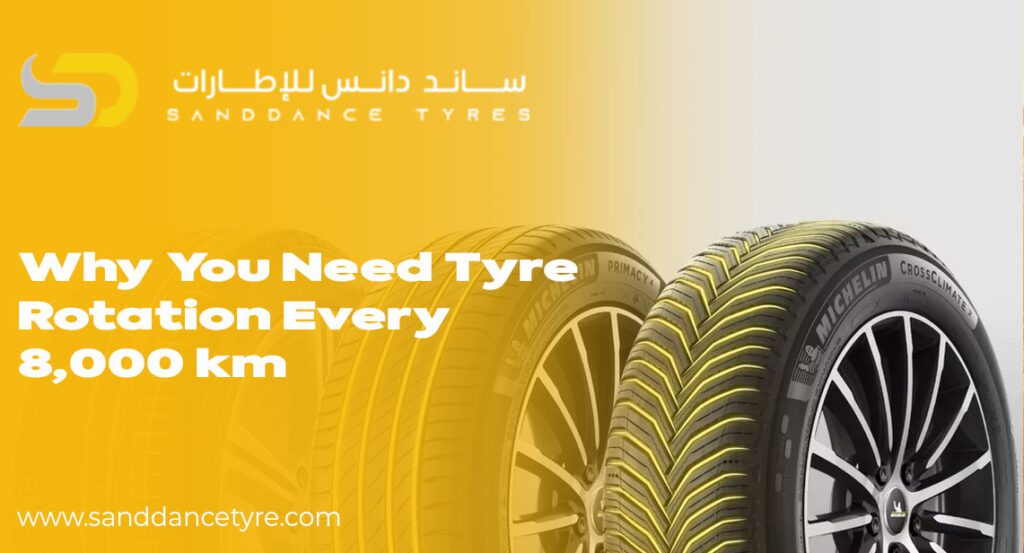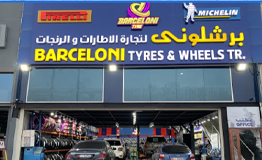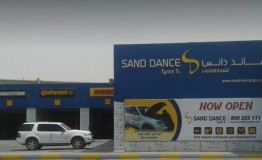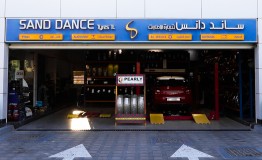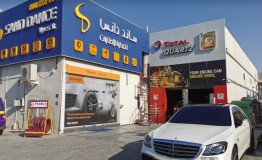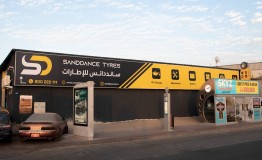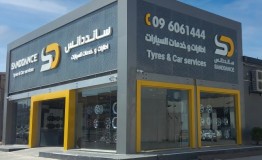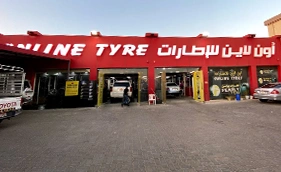In the UAE, we see that many drivers pay attention to tire pressure and alignment, but in turn, they ignore the importance of tire rotation. What we should be doing is to rotate your tires regularly, which we recommend every 8,000 km as a very important aspect of tire care that also improves safety, handling, and tire life. Tires wear in different ways based on where they are placed on the car, and also, we see that not rotating them causes uneven wear, poor fuel efficiency, and expensive replacements. This guide looks at why tire rotation is so important and how it plays a role in keeping your car performing at its best in the UAE’s road conditions.
What is Tyre Rotation and How Does it Work?
Tyre rotation is a practice of moving tyres to different positions on your vehicle, typically from front to rear or diagonally. What it does mainly is to even out wear between all four tyres. Different components of your car put out different amounts of pressure on the tyres, which in turn causes some to wear out faster than others. In front wheel drive cars, for instance, the front tyres do most of the work during turning and breaking, which causes them to wear out faster. By rotating the tyres at regular intervals, you will see that they will wear out at the same rate.
Why Every 8,000 km is the Ideal Rotation Interval
Tyre manufacturers and auto experts say to rotate your tires every 8,000 km or every 6 months, whichever comes first. This we do to balance out the issue of uneven wear and, at the same time, to maintain tread performance. In the UAE, we have high heat and road friction, which causes tires to wear out faster as compared to what we see in cooler climates. By sticking to this schedule, we are in fact preserving tire integrity and improving your safety while driving. Delaying tire rotation will cause some tires to wear out prematurely and may also cause dangerous blowouts.
How Front-Rear Tyre Swap Balances Wear
One of the top rotation patterns is the front-to-rear tire swap. In front wheel drive cars, the front tires do the majority of the braking, steering input, and acceleration, which in turn causes them to wear out faster. By switching the front tires to the rear and the rear to the front, you even out the wear, which in turn extends tire life and also improves vehicle balance, which is very noticeable on high-speed travel of the UAE highways. For all wheel drive cars, a cross pattern rotation is usually what is recommended by the manufacturer.
Benefits of Tyre Rotation for Wear Balancing
Tyre rotation’s greatest benefit is that it equalizes wear. Uneven wear, which is common on our roads from the heat of the desert to the stop-and-go of urban traffic and the stress of long-distance travel, brings about poor handling, reduced grip, and longer braking distances. With rotation, you achieve uniform tire wear, which in turn improves performance and keeps your vehicle stable on turns and out of emergency stops. In the UAE, we see a large improvement in ride quality from proper rotation.
Improved Tread Life and Fuel Efficiency
Rotating your tyres at regular intervals is a practice that increases their life by a few thousand kilometers. As opposed to the premature replacement of tires, which is brought on by irregular wear, tire rotation will see to it that tread wear is more uniform, and thus you may use your tires till they are worn out naturally. Also, this practice improves fuel efficiency. Uneven tires have more rolling resistance, which in turn makes the engine to work harder and burn more fuel. Tyre rotation also brings about smooth performance and better fuel economy, which is a great issue for long-distance drivers in the UAE.
How Tyre Rotation Supports Alignment and Suspension
Regular change-out also helps to identify early alignment or suspension issues. If some tires wear out faster or more unevenly, even after rotation, that may be a sign of a bigger mechanical issue. This early detection can save UAE drivers from large repair bills down the road. Rotation of your tires gives techs a chance to look for other issues like bulges, tread separation, or sidewall damage, which are more prevalent in our region’s extreme heat.
The Role of Equal Tread Depth in Safety
Even tire wear is a performance factor that you notice particularly during emergency breaks or cornering. Tyres that wear unevenly can sacrifice traction, which in turn makes the car harder to handle. For drivers in the UAE who see sudden stops in city traffic or unexpected rain on the highway a bit more often, equal tire wear gives you that extra confidence and safety. Proper tire rotation is key to maintaining even wear across all four wheels.
Extend Tyre Warranty and Reduce Long-Term Costs
Many tire brands put out warranties that are based on proper care. We see that neglect of tire rotation is a breach of those warranties. By way of a set routine, for instance, every 8,000 km, you do what the manufacturer asks of you. Also, by rotating your tires routinely, you put off early tire replacement, which in turn saves you money in the long term. It is an easy service that in the end, gives you safety and economic benefits, which in regions like the UAE, you see play out very truly where tire conditions wear out faster.
Read More: Choosing AWD Tyre vs. RWD Vehicles: What UAE Drivers Need to Know
Bottom Line
Tyre rotation is more than a technicality it is a key maintenance practice that improves safety, extends tyre life, and which also improves driving comfort. In the hot climate and varied terrain of the UAE, we see that rotation of your tyres at 8000 km intervals brings about even wear, better handling, and best fuel economy. At Sanddance Tyres, we include tyre rotation in every inspection we do for you to keep your vehicle ready and secure. Take the wise step — rotate your tyres and hit the road with confidence.
Frequently Asked Questions
Why is tyre rotation necessary?
Tyre rotation, which is the practice of changing the position of your tires, does even wear of all four tires out which in turn improves handling, extends tire life, and also maintains balanced tread wear.
In the UAE, how often should tires be rotated?
Every 8,000 km, which is also which is at least a 6-month interval, do to the hot climate in the UAE, which causes faster tire wear, we recommend.
Can rotating your tyres improve alignment?
While rotation does not fix alignment issues, it can do a good job in identifying them early. Uneven wear after rotation may point out a suspension or alignment problem.
Do all vehicles need tyre rotation?
Of course, it doesn’t matter if you have front wheel, rear wheel, or all wheel drive, tyre rotation is a must for performance and safety.
What are tell tell-tale signs that I delayed tyre rotation past the recommended time?
Treads that wear out unevenly, vibration, greater braking distance, and reduced fuel economy are what you’ll see. As soon as you do, in for an alignment.


